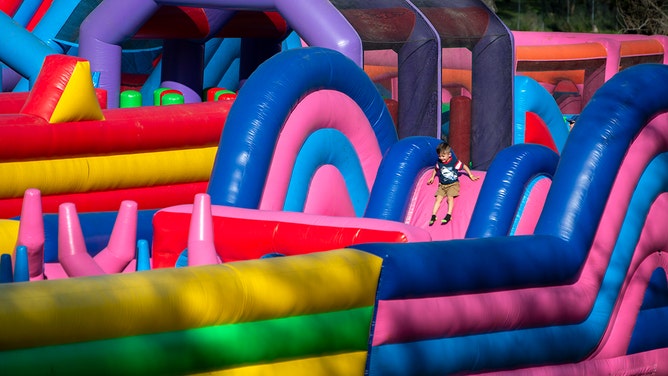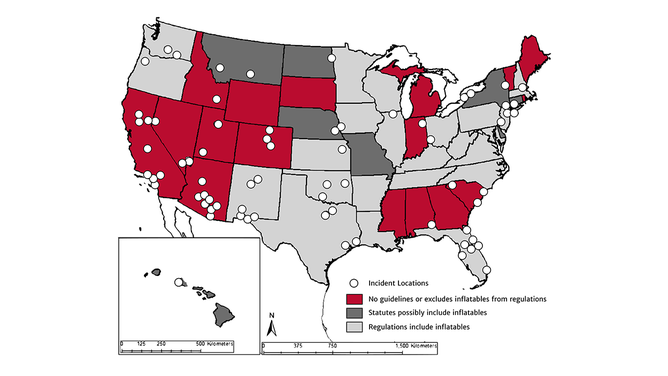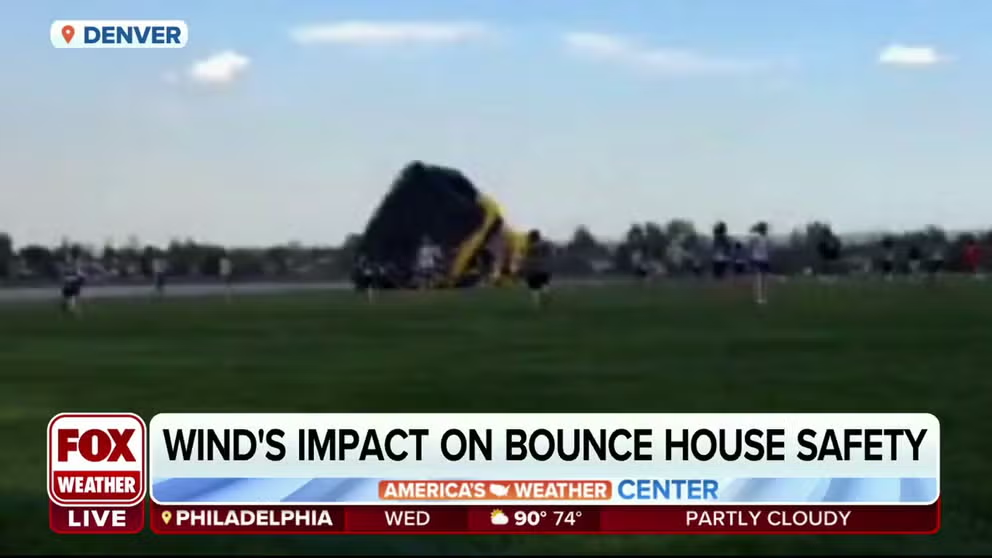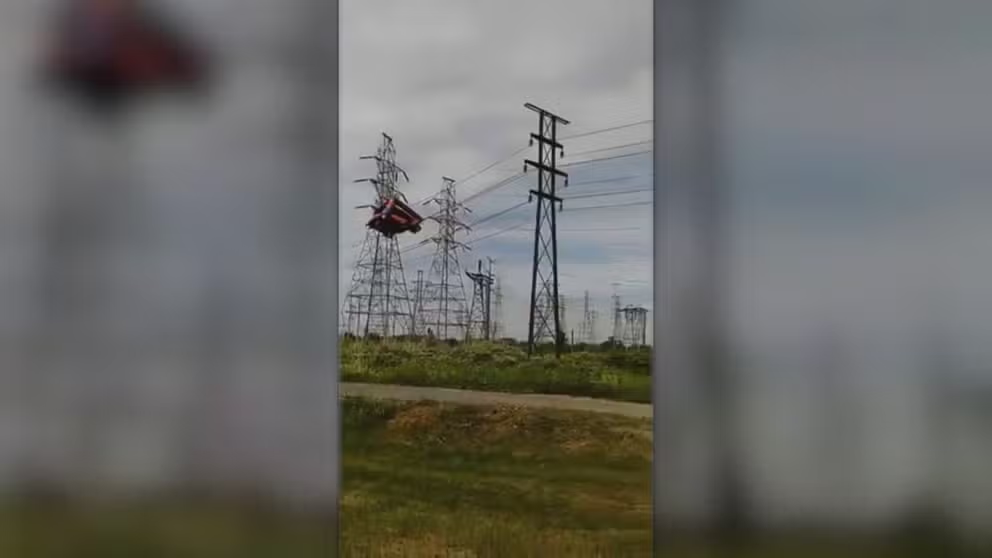Bounce house tragedies: Study finds even light winds could lead to inflatables taking flight
It’s a simple saying, but the consequences can be deadly. And the lack of U.S. bouncy castle regulations on celebratory inflatables leaves children vulnerable.
How does wind impact safety of bounce houses?
Geography professor at the Franklin College of Arts and Sciences John Knox explains on FOX Weather.
ATHENS, Ga. – Even in clear skies, bounce houses can fly.
It’s a simple saying, but the consequences can be deadly. And the lack of U.S. bouncy castle regulations on celebratory inflatables leaves children vulnerable.
The first-ever study on wind-related bounce house accidents documented 132 cases worldwide from 2000-2021. These mishaps caused at least 479 injuries in adults and juveniles and at least 28 deaths.
"The estimates are probably undercounted simply because not everything makes the Internet," said John Knox, lead author of the study and University of Georgia geography professor.
HOW TO WATCH FOX WEATHER ON TV
Knox and his team tabulated the results of 64 different Google combinations with search terms like "wind" and "bounce house," some done daily, resulting in thousands upon thousands of results. They then analyzed the data from a meteorological perspective, looking at the conditions that contributed to the incidents.

A recent study from the University of Georgia found that wind has caused 479 injuries and 28 deaths in bounce houses since 2000.
(Mindy Schauer/MediaNews Group/Orange County Register / Getty Images)
Over 70% of the accidents had a specific meteorological cause identified. Knox found events like cold frontal passages, dust devils, or thunderstorm-related winds most likely occurred at the time.
Yes, most people know not to have their kids in a bounce house when a thunderstorm is overhead, or even worse, a tornado is present. But in all these situations, Knox said the weather was "sneaky."
"We understand that level of safety, but I’m talking about winds of 25 mph, maybe less," he said. "That that doesn’t scream bad weather to people."
For events with nearby wind data available, Knox noted that 22% of all incidents occurred with reported wind speeds lower than any regulatory gold standard, also known as the American Society for Testing in Materials.
Bounce house sails into power lines
A bounce house escaped its moorings at a birthday party in Niagara Falls, New York, on June 18, 2016, and sailed into the air before crashing into nearby high-voltage power lines. No children were inside the inflatable house when it took off, and there were no injures, local media reported.
"Even the regulations tend to say don’t use these houses above 25 mph," Knox said. "About half the cases, we couldn’t locate a nearby wind observation above (that)."
Regulations regarding bounce house safety vary widely in the U.S.
Seventeen states either have no guidelines or expressly exclude inflatables from regulation. Nineteen U.S. states’ laws or regulations explicitly cite ASTM standards, which set limits on the wind speed in which inflatables should be used and, for commercial bounce houses, require the presence of a meteorologically knowledgeable attendant.

Many, but not all, of the bounce house accidents the researchers logged occurred in states with no regulations governing bounce house use.
(Lindsay Robinson / University of Georgia)
"Even if you adhere closely to the regulations … you might be within the regulations and paying close attention … there might be a problem," Knox said. "We had cases where the nearest wind observation was not 25, 30, 40 mph; it might be 5 or 6 mph."
Knox hopes his study will help increase vigilance with the use of bounce houses in good weather to reduce a lot of broken bones. He also created a website to disseminate the study’s data and provide safety tips.
"If we can leverage these cases to make people act in more responsible, vigilant ways just every weekend with these, that’s thousands of trips to the ER that don’t happen anymore every year," he said.

